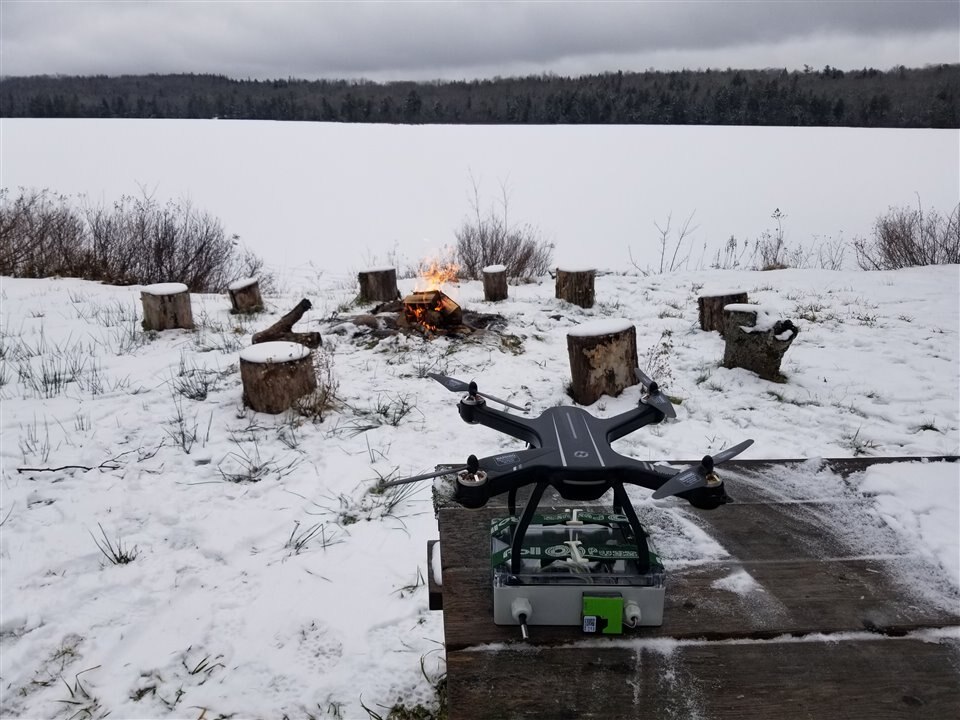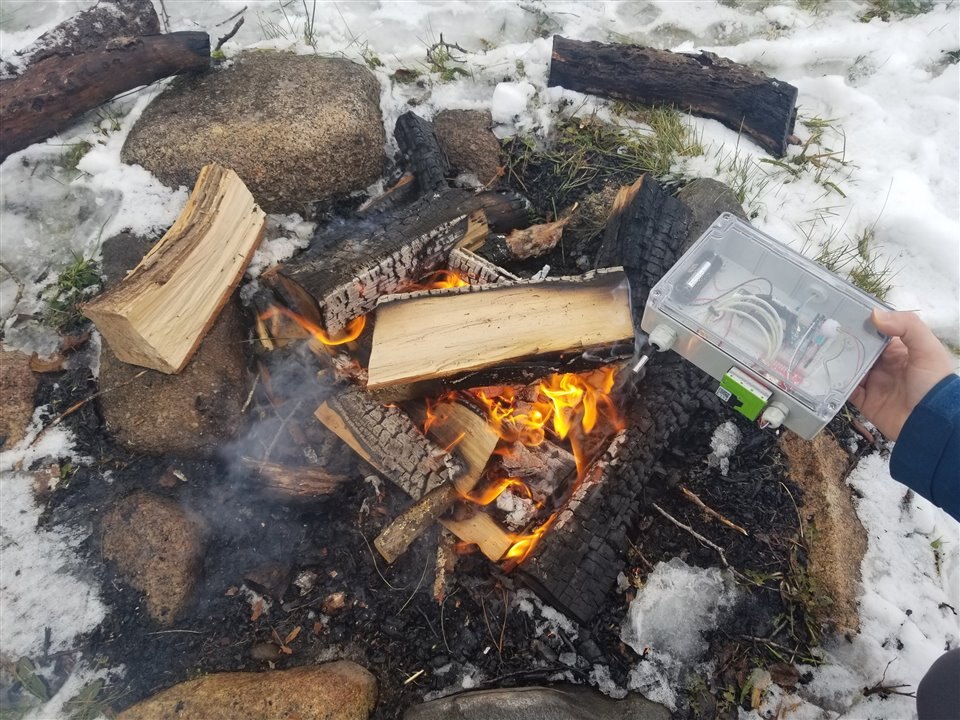After having all my sensors wired and my Arduinos coded, it was finally time to test my drone-mounted particulate matter device! This first video shows the set up and all the sensors right before doing the test run.
There was snow on the ground, but I was still able to make a decent campfire that would hopefully give me some good particulate matter readings. My brother-in-law Samuel was going to fly the drone (because it is his drone, and he had a license) so I strapped on the device after making sure everything was running smoothly and I was receiving data on my laptop in the cabin. So here we go!
As you could see in the previous video, my excitement was building as we were preparing for takeoff, then… disappointment as we soon realized that the enclosure with all the sensors was too heavy for the drone! At full throttle it could hover a couple of inches, but definitely not fly. I was afraid of this but didn’t know exactly how much weight his recreational drone could carry. There also wasn’t anything I could do to reduce the weight enough, so, I resigned myself to the fact that the drone wasn’t going to carry my device.

The next day, I carried and walked the drone around the campfire so that I could actually get some data I could work with. It was a little rainy and cold (around 0°C or 30°F) so I was very curious to see how the enclosure would hold up! I walked in a grid pattern and did it three times holding the device at three different elevations: at my knees, chest height, and above my head. In the pictures you can see all my footprints in the snow where I walked around. Even though the device was too heavy and I couldn’t fly it with the drone, it was still a cool proof of concept and I got some data I could analyze.

I was very impressed with how the Hammond enclosure performed. Even though it was a little rainy, the circuits inside stayed bone dry! At one point I really wanted to put the enclosure to the test, so I placed it on a log on the edge of the fire! The enclosure was doing spectacularly, and probably could have handled more heat and smoke, but the particulate matter sensor on the outside of the enclosure was getting hot, so I had to remove it. All in all, I was very impressed with the enclosure and how it protected the circuits and sensors inside from the heat, cold, rain, and smoke! In the next blog, I’ll take a look at the data I collected, make some maps and graphs, and discuss the results.


Top Comments